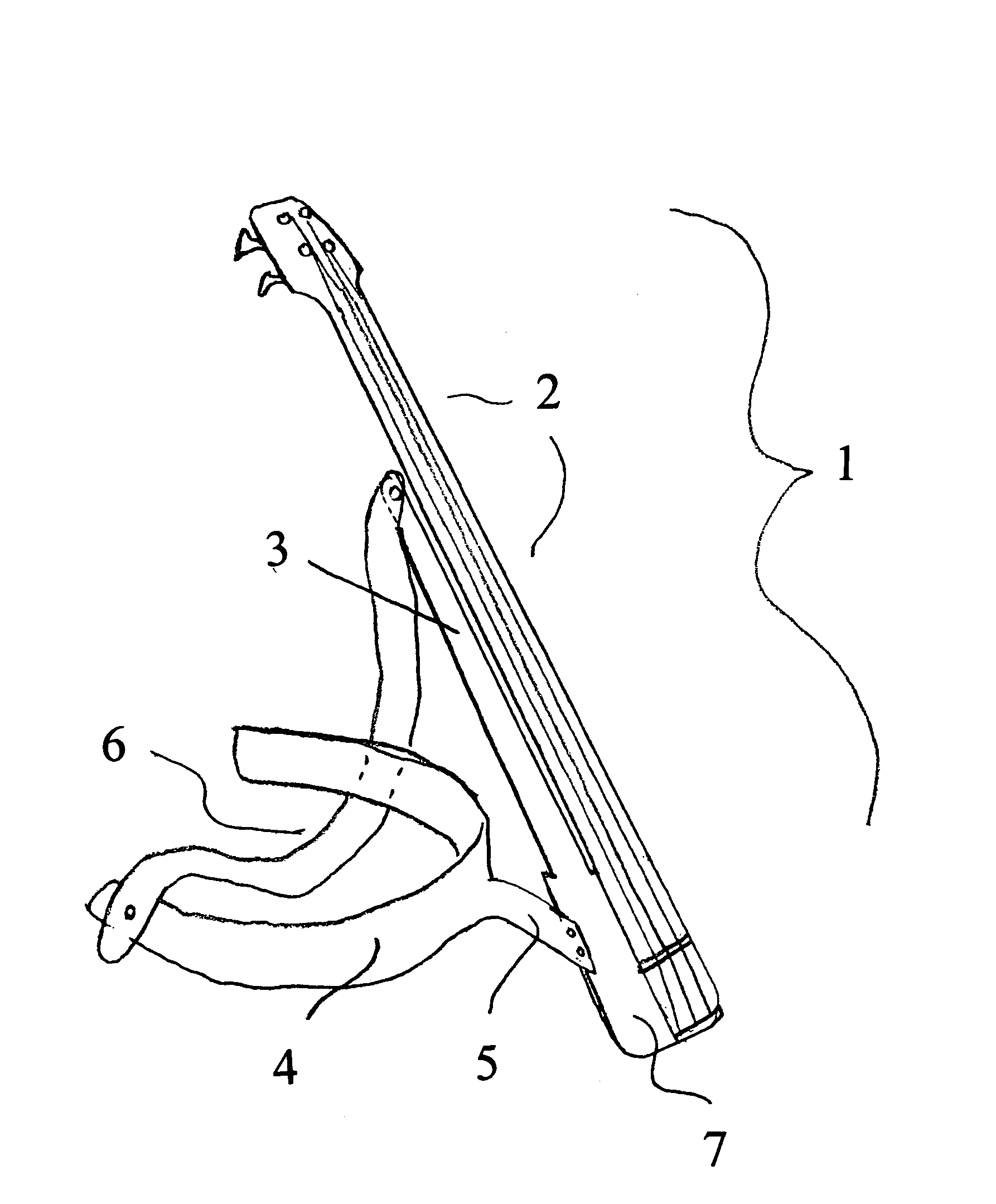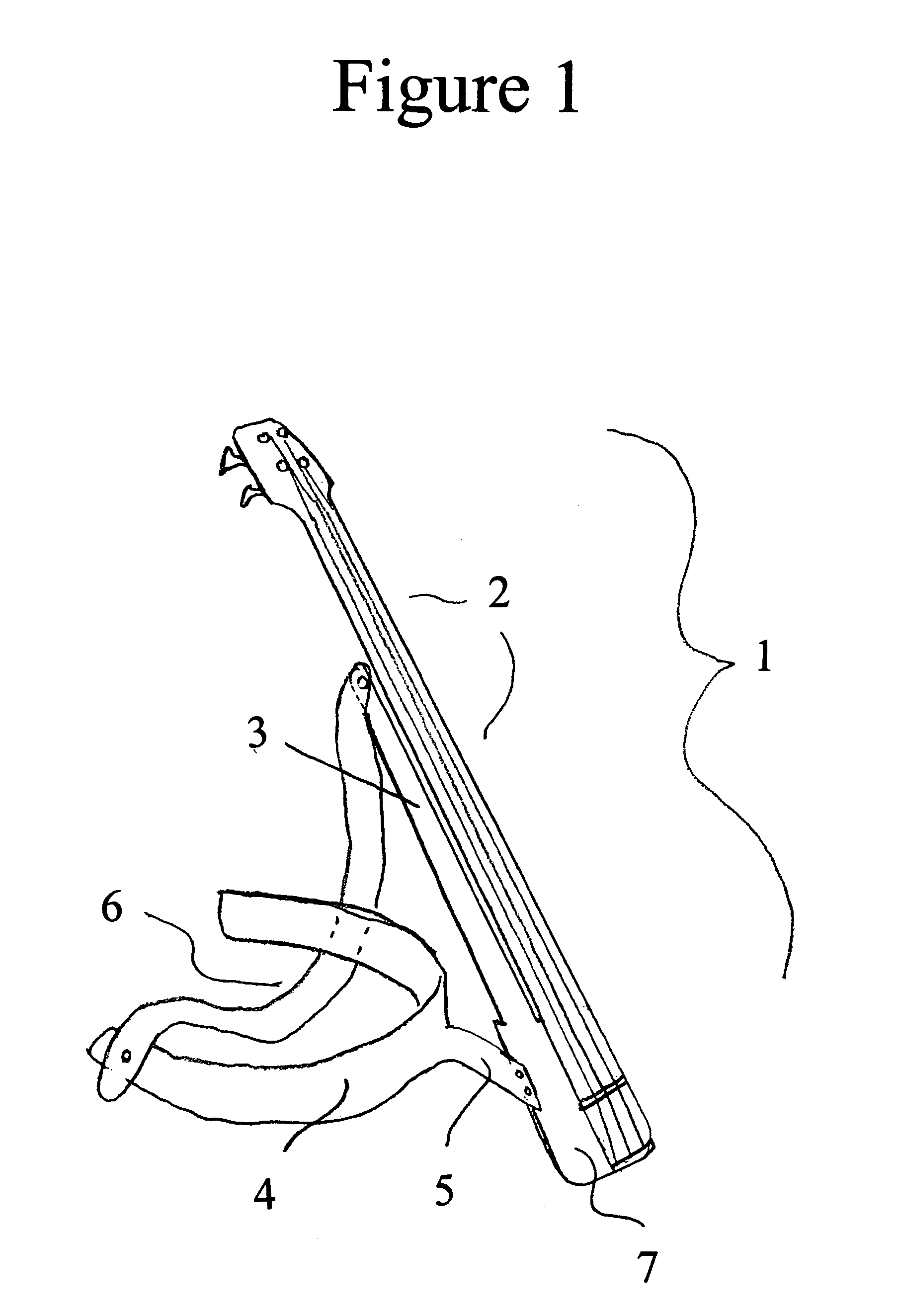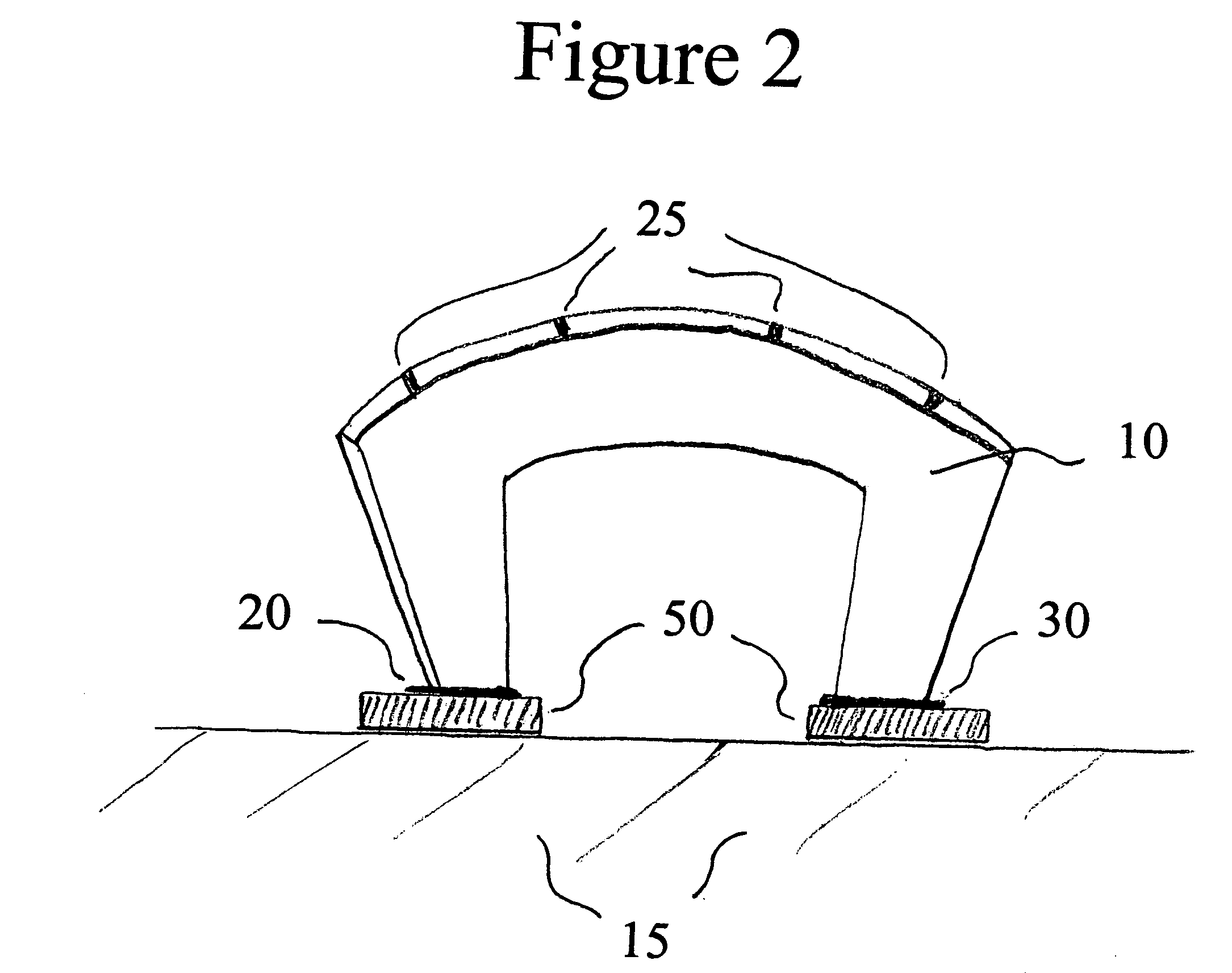Electric string instruments and string instrument systems
a string instrument and string instrument technology, applied in the field of electric string instruments, can solve the problems of limited instruments, low sound volume, young players' transportation difficulties, etc., and achieve the effect of convenient string instrument playing and convenient us
- Summary
- Abstract
- Description
- Claims
- Application Information
AI Technical Summary
Benefits of technology
Problems solved by technology
Method used
Image
Examples
example 1
[0140]In this example music was played on a cello having a bridge weighing less than 3 grams, with individual neoprene foam pads between the bridge feet and a hardwood base, the neoprene having a thickness of between ⅛ and ¼ inch and a durometer of between 10 and 30. Good results were obtained. Replacement of the neoprene with harder neoprene of durometer rating of 40, 60 and 80 yielded sound that was progressively more dull. Replacement with rubber of the same approximate durometer yielded a more durable system. For the bridge material, maple gave the best results. Oak yielded a slightly more dull sound. Soft woods were studied and gave some interesting sounds, with unexpected resonances away from the natural open string frequencies.
[0141]Bridges were made by cutting down standard German made maple cello bridges. More than ⅘ of the bridge wood was removed. A similar bridge made from bola wood was heavier and gave poor (dull) sound performance. Thin plastic piezo sensors were positi...
PUM
 Login to View More
Login to View More Abstract
Description
Claims
Application Information
 Login to View More
Login to View More - R&D
- Intellectual Property
- Life Sciences
- Materials
- Tech Scout
- Unparalleled Data Quality
- Higher Quality Content
- 60% Fewer Hallucinations
Browse by: Latest US Patents, China's latest patents, Technical Efficacy Thesaurus, Application Domain, Technology Topic, Popular Technical Reports.
© 2025 PatSnap. All rights reserved.Legal|Privacy policy|Modern Slavery Act Transparency Statement|Sitemap|About US| Contact US: help@patsnap.com



